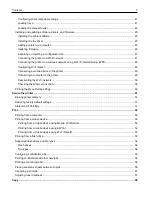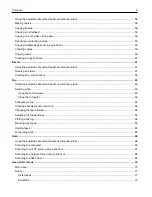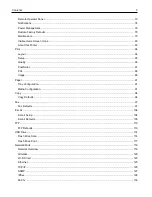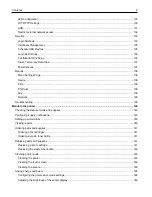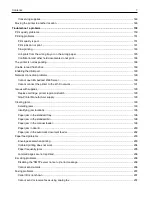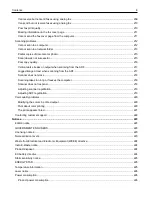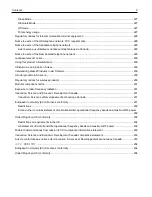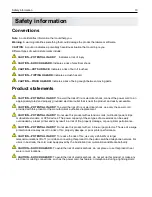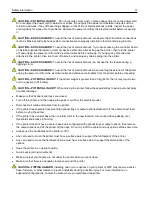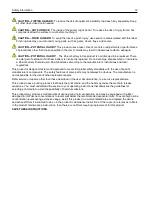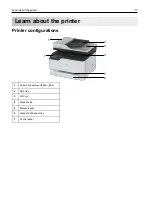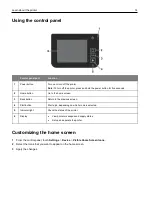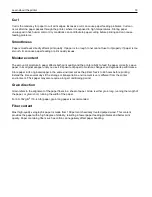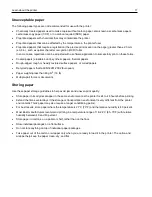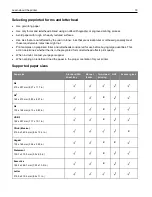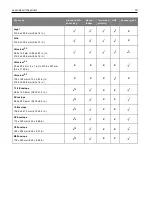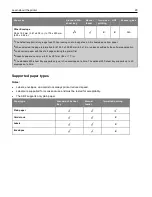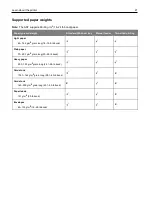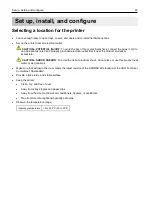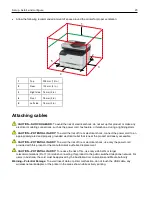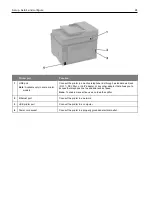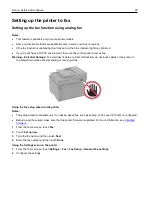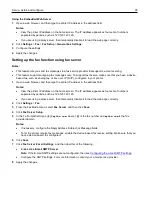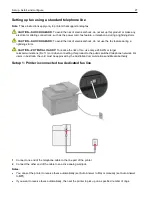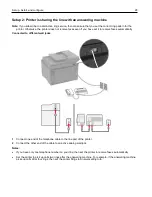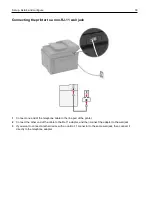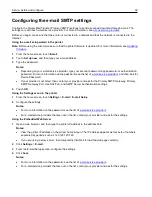
Learn about the printer
17
Unacceptable paper
The following paper types are not recommended for use with the printer:
•
Chemically treated papers used to make copies without carbon paper, also known as carbonless papers,
carbonless copy paper (CCP), or no carbon required (NCR) paper
•
Preprinted papers with chemicals that may contaminate the printer
•
Preprinted papers that can be affected by the temperature in the printer fuser
•
Preprinted papers that require a registration (the precise print location on the page) greater than ±2.3 mm
(±0.9 in.), such as optical character recognition (OCR) forms
In some cases, registration can be adjusted with a software application to successfully print on these forms.
•
Coated papers (erasable bond), synthetic papers, thermal papers
•
Rough-edged, rough or heavily textured surface papers, or curled papers
•
Recycled papers that fail EN12281:2002 (European)
•
Paper weighing less than 60 g/m
2
(16 lb)
•
Multiple-part forms or documents
Storing paper
Use these paper storage guidelines to help avoid jams and uneven print quality:
•
Store paper in its original wrapper in the same environment as the printer for 24 to 48 hours before printing.
•
Extend the time several days if the storage or transportation environment is very different from the printer
environment. Thick paper may also require a longer conditioning period.
•
For best results, store paper where the temperature is 21°C (70°F) and the relative humidity is 40 percent.
•
Most label manufacturers recommend printing in a temperature range of 18–24°C (65–75°F) with relative
humidity between 40 and 60 percent.
•
Store paper in cartons, on a pallet or shelf, rather than on the floor.
•
Store individual packages on a flat surface.
•
Do not store anything on top of individual paper packages.
•
Take paper out of the carton or wrapper only when you are ready to load it in the printer. The carton and
wrapper help keep the paper clean, dry, and flat.

